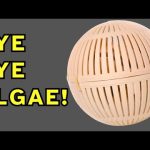Homesteading is a rewarding journey that encourages self-reliance and sustainability. One significant aspect of this lifestyle is generating your own power using solar panels. Solar energy is not only eco-friendly but can also save money in the long run. For those looking to improve their solar setup, adding a combiner box is a valuable upgrade. A combiner box helps organize and protect connections from multiple solar panels, making it an essential component for anyone with a solar power system. This article will walk through the steps to install a solar combiner box, making sure to emphasize safety and clarity throughout.
Before starting any electrical work, safety is crucial. First, make sure to disconnect your solar panels from the power supply in several areas. This includes disconnecting the panels themselves and ensuring that they are not connected to any power inverters or batteries. With a solar system, panels can still generate electricity during the day, even when they’re not in use. To ensure the work area is completely safe, it is important to turn off the inverters and use the PV disconnects to cut all power to your home. This step is vital to avoid any accidental shocks while working with live electrical wires.
Once the system is completely disconnected, it is time to set up the combiner box. Many homesteaders opt for a plastic kombiner box because it is lightweight and does not need grounding like a metal box. You can purchase adjustable grommets to reinforce the incoming wires in the install. These grommets will secure the wires as they enter the box, minimizing the risk of exposure to the elements and ensuring they stay in place. For the grounding conductors, ensure you have a solid connection to prevent any electrical issues from arising.
After setting up the grommets, the next step is to install surge protectors and breakers. These components are designed to shield the solar system from voltage spikes. For instance, surge protectors can divert excess voltage in the event of a lightning strike, protecting the entire system from potential damage. Connect each string of solar panels to its own DC breaker based on its amperage. This organization helps to monitor each panel string and offers better control over the system.
Wire management in the combiner box is key. Use feral ends on your wires to provide a secure connection to both the breakers and the dinkle terminals. Cut the insulation carefully so that enough of the metal core is exposed for a solid connection while ensuring that the wire does not fray. Use a crimping tool to clearly secure the feral to the wire. This attention to detail helps prevent unexpected breaks and failures later on.
As you finish installing the wires, it is essential to ensure everything is tidy and appropriately positioned. Organizing the wiring neatly will help avoid confusion and possible mishaps in the future. Once all connections are made and secured, double-check that everything is installed correctly. When your combiner box is complete, you can reconnect the solar panels and power systems, thus enhancing your self-reliant energy production.
Embracing a homesteading lifestyle can feel empowering, especially when you learn to harness the energy from the sun. Updating your solar system with a combiner box is a significant step in solidifying a well-organized and high-functioning energy setup. With the information provided, anyone can gain the confidence to approach this task while creating a sustainable and autonomous living environment. Always remember to prioritize safety and enjoy the process of becoming more self-sufficient.



GIPHY App Key not set. Please check settings